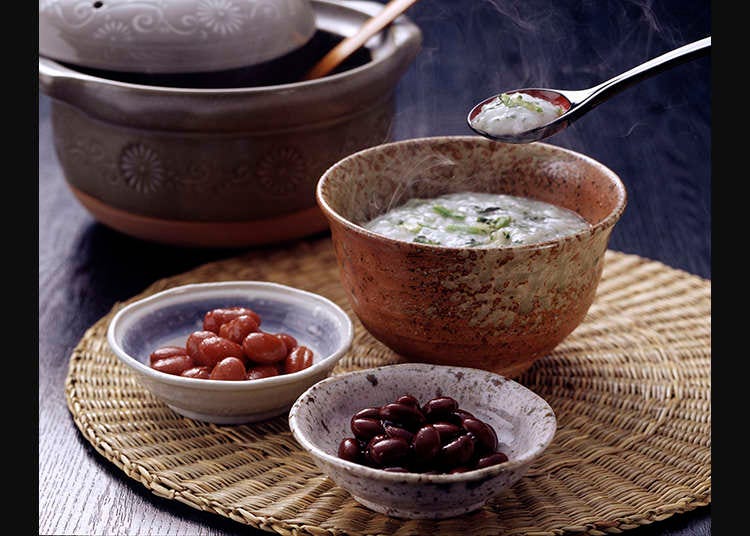
Okayu and zosui are both kinds of rice dishes made by boiling rice with water or soup until it becomes soft. They are made without oil, so they are easily digested and do not put a burden on your stomach.
The difference between rice, okayu and zosui
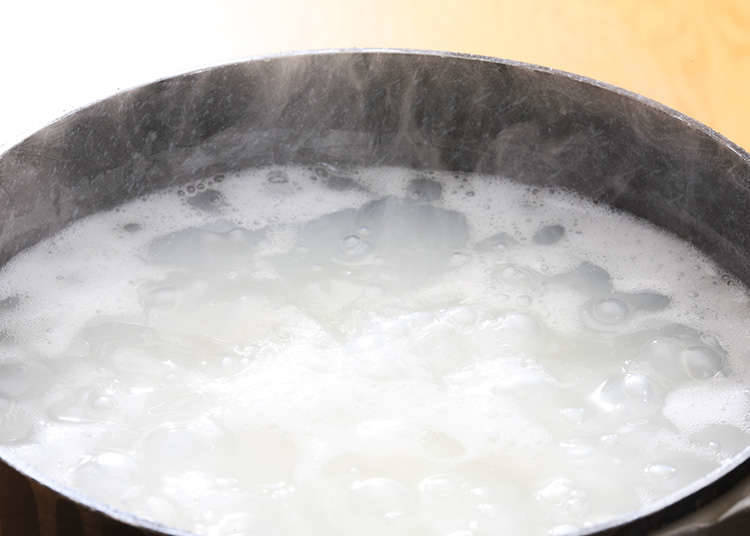
What we call "okayu" is rice cooked with more water than normal rice. What we call "zosui" is cooked rice boiled with dashi stock soup.
Japanese soul food
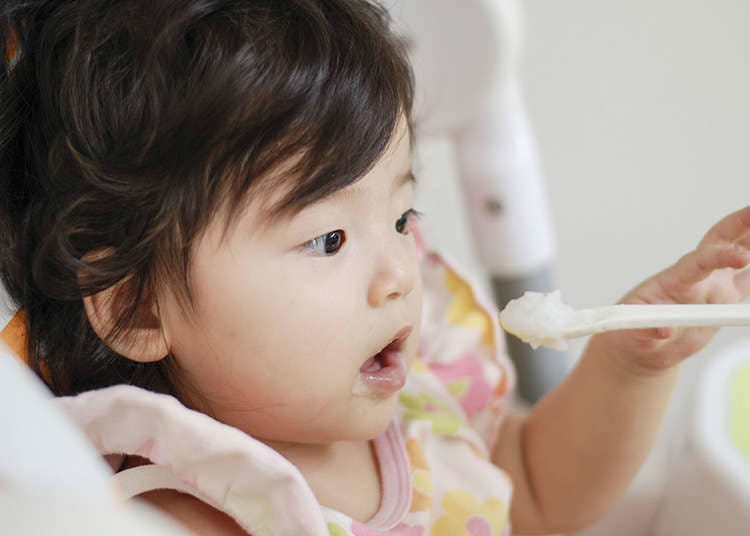
Okayu began to appear in documentary records around the 11th century. In Japanese homes, it is often made for babies or sick people.
Basic okayu is simple and white
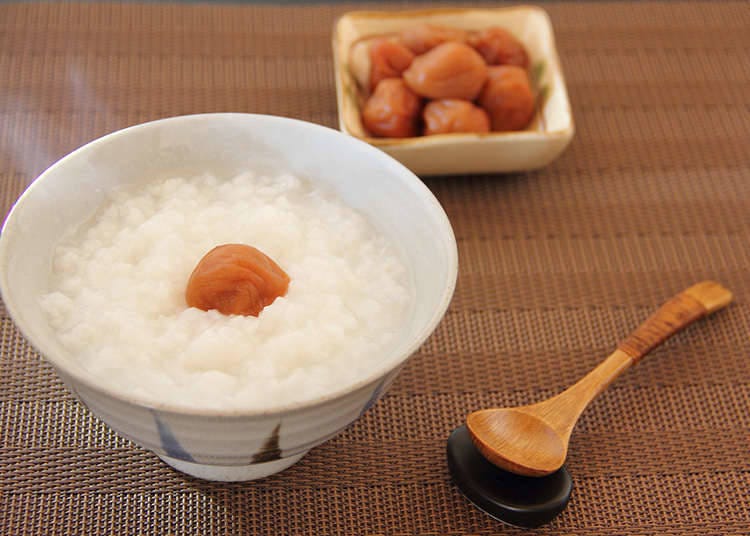
"Shirogayu" is the basic okayu, without any flavor. Its hardness varies from a little softer than normal rice to a paste with almost no rice grains, depending on the percentage of rice and water. "Shirogayu" is often eaten with strong-flavored side dishes. One of them is "umeboshi", dried-plum pickles made by soaking plums in salt and drying.
Side dishes that go well with Shirogayu
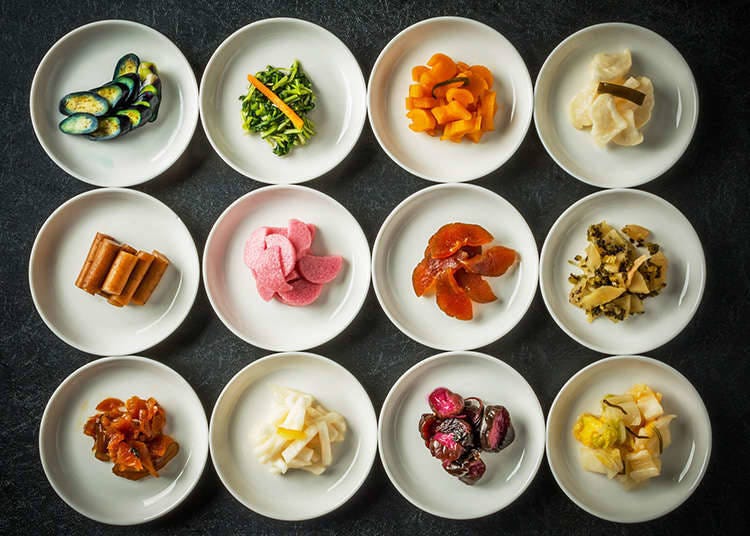
Salted kelp and tsukemono are often eaten with Shirogayu. Tsukemono (pickles) are vegetables marinated in salt and rice bran.
Nanakusagayu (rice porridge with seven herbs)
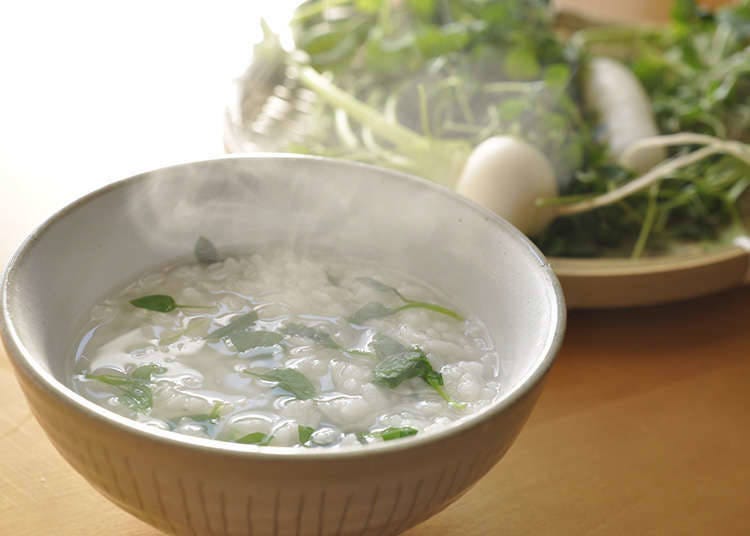
In Japan, from ancient times, there has been a custom of eating Nanakusagayu on January 7, hoping for good health for the year. Nanakusagayu is porridge made by boiling rice with seven kinds of herbs; "seri (water dropwort)", "nazuna (shepherd's purse)", "gogyo (cudweed)", "hakobera (chickweed)", "hotokenoza (nipplewort)", "suzuna (turnip)" and "suzushiro (radish)". It is also said that ancient Japanese people expected that Nanakusagayu would give rest to the stomach that had weakened by excessive drinking and eating during the New Year holiday.
Okayu with red beans
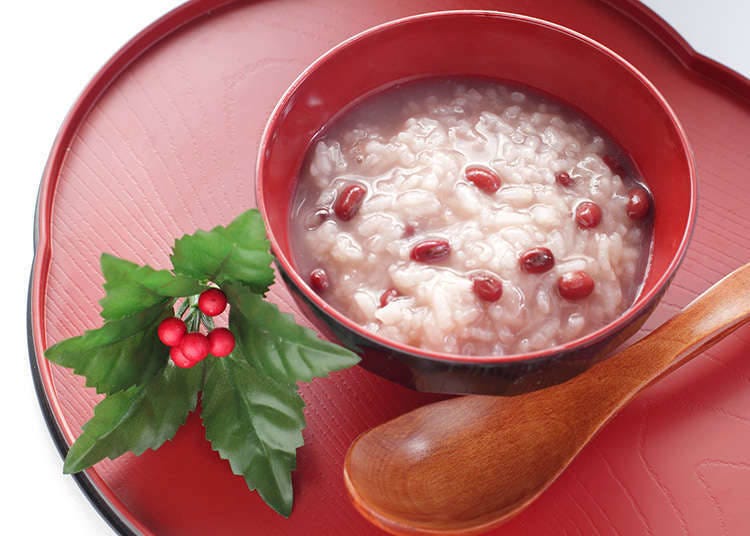
Japan has also a custom of eating "Komamegayu" on January 15. "Komamegayu" is made by boiling rice and red beans until they become soft. It has been said since ancient times that red beans have the power to ward off evil spirits. By eating Komamegayu, people hoped to ward off evil spirits and epidemic diseases. January 15 is a full moon day in the lunar calendar, so Komamegayu is also called "Nozomigayu" in the sense of okayu eaten with hope on the day.
Chagayu
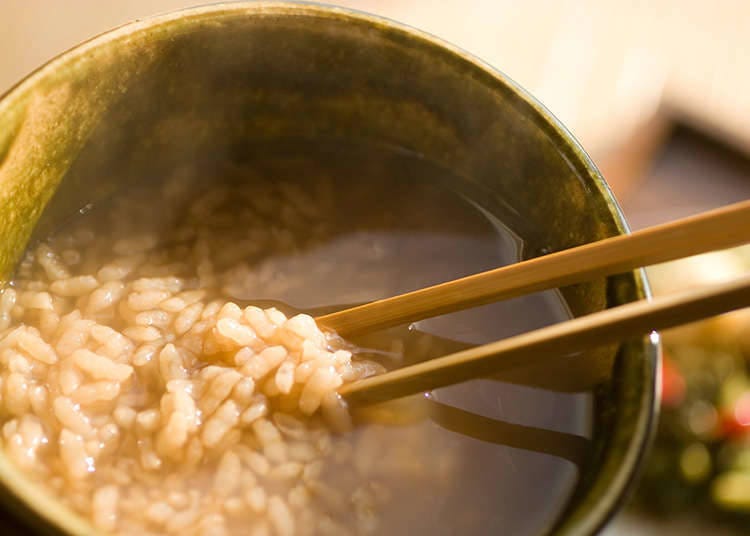
"Chagayu" is eaten mainly in Nara Prefecture. It is made by boiling rice in water-based "hojicha"; roasted Japanese tea (green tea). It was originally eaten by monks of temples of the region from over 1000 years ago. In summer it is eaten chilled. Sometimes vegetables, potatoes and beans are put in.
Japanese-style pot dish is finished with zosui
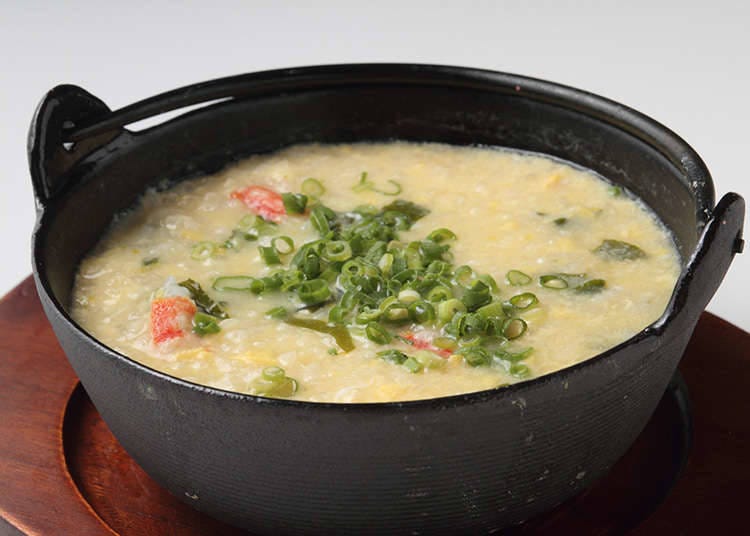
Many Japanese make "zosui" when they have finished eating the ingredients of a pot dish. They put rice in the remaining soup of the pot dish and boil it. You can often order "Zosui set (a set of rice, egg, chopped green onion, etc.)" as an add-on at restaurants where pot dishes are served.
- Category
*Prices and options mentioned are subject to change.
*Unless stated otherwise, all prices include tax.
Popular Tours & Activitiess
Recommended places for you
-
Appealing

Rukku and Uohei
Izakaya
Sapporo / Chitose
-

Jukuseiniku-to Namamottsuarera Nikubaru Italian Nikutaria Sannomiya
Izakaya
Kobe, Sannomiya, Kitano
-
Goods
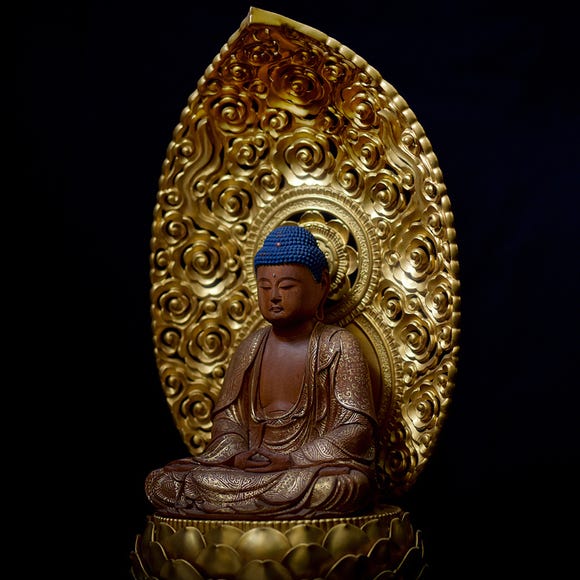
Yoshida Gennojo-Roho Kyoto Buddhist Altars
Gift Shops
Nijo Castle, Kyoto Imperial Palace
-

Kanzenkoshitsuyakinikutabehodai Gyugyu Paradise Sannomiya
Yakiniku
Kobe, Sannomiya, Kitano
-

ISHIDAYA Hanare
Yakiniku
Kobe, Sannomiya, Kitano
-

Kambei Sannomiyahonten
Yakiniku
Kobe, Sannomiya, Kitano
-

10 Must-Buy Cosmetics at Don Quijote (2025 Edition)
-
Ad
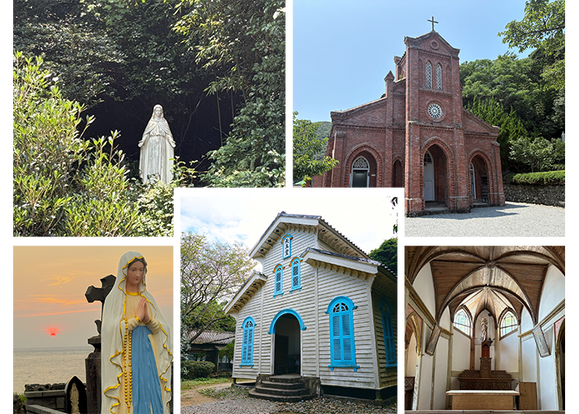
Unraveling the History of the Hidden Christians from Goto Islands, Nagasaki Prefecture, located in Kyushu
by: Yohei Kato
-

A Don Quijote Like No Other: Step Inside the All-New Tourist-Friendly Store at Shinjuku Tonanguchi Bekkan
by: Chehui Peh
-

See Asakusa and Tokyo Skytree® in a New Light at the "Také Akari" Festival (Winter 2025-2026)
by: Guest Contributor
-

Fine Dining on Rails? Japan Announces Stunning NEW 'Laview' Restaurant Train
-

2025 Japan Autumn Color Report: Northeastern Japan Nearing Peak
by: Timothy Sullivan
-

5 Best Hotels Near Universal Studios Japan (Osaka): Top-Rated Places to Stay
by: WESTPLAN
-

3 Famous Ramen Shops in Yamagata - Japan's "Ramen Prefecture"!
-

Michelin Star Restaurants & More: 3 Best Okonomiyaki Shops in Dotonbori Osaka
-

Atami 1-Day Itinerary: Exploring Japan's Castle & Hot Springs Resort Town Near Tokyo!
-

8 Unfamiliar (But Totally Normal) Customs in Japan!
-

Healthcare in Japan for Tourists: What to Do When You Get Sick or Injured in Japan
- #best sushi japan
- #what to do in odaiba
- #what to bring to japan
- #new years in tokyo
- #best ramen japan
- #what to buy in ameyoko
- #japanese nail trends
- #things to do japan
- #onsen tattoo friendly tokyo
- #daiso
- #best coffee japan
- #best japanese soft drinks
- #best yakiniku japan
- #japanese fashion culture
- #japanese convenience store snacks












